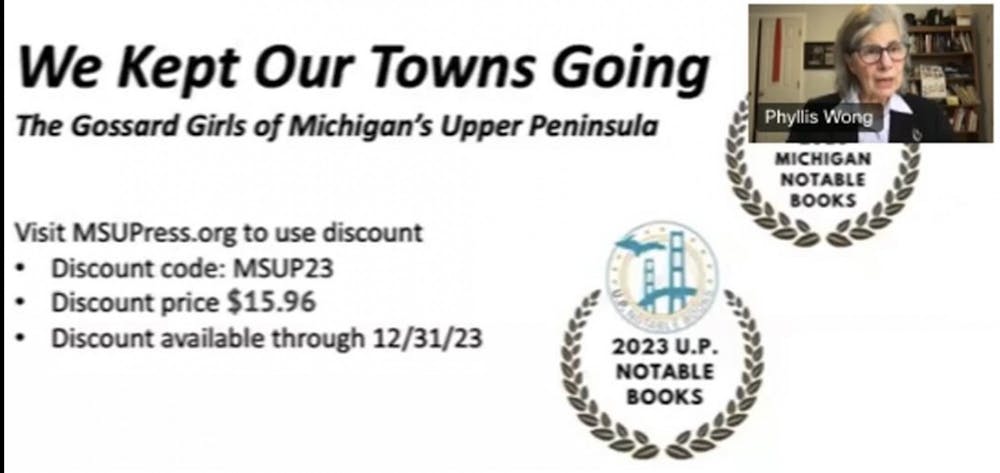Clarke historical library speaker series: Phyllis Michael Wong
Phyllis Michael Wong presented her findings through her research into the Gossard factories
On Feb. 7 over a WebEx meeting, Historian, Educator and Author of the award-winning book “We Kept Our Towns Going: The Gossard Girls of Michigan's Upper Peninsula“ Phyllis Michael Wong, shared stories of the women who worked in Upper Peninsula garment factories for half of the 20th century.
Wong has also served as the First Lady of both Northern Michigan University (2004–12) and San Francisco State University (2012–19).
The Gossard factories were garment factories located in Ishpeming, a town in the Northern Upper Peninsula, and Gwinn, just Southeast of Ishpeming.
The Ishpeming Factory opened in the early 1920s and was operating until the 1970s. They largely employed women, as about 80 percent of the workers there were Wong said.
Wong interviewed people who formerly worked at the Gossard factories, and reviewed articles about it.
At the height of the factories, they collectively employed over 1000 people, the majority of which were women.
Wong said that this helped stimulate local economies, as it brought not only jobs but also more money flowing through the local community.
These factories provided hundreds of jobs to women at a time when women made up 20 percent of the US national workforce, compared to today, where women make up 47 percent of the workforce.
In her book, Wong recounts the influence the Gossard factory had on its female workers, and how this aided impact on society as the company empowered women “economically, socially, but also politically.”
Wong also said that this helped stimulate local economies, as it brought not only jobs but also more money flowing through the local community.
The factories did not operate without problems though, as Wong said there were issues with favoritism in the factory
“A department head would give her good friends the best pieces (of clothing) to put together so they would earn more money,” Wong said. “Some bras were easy to make some required more time, and the faster you worked, the more money you made.”
Wong also said that at times, management had been harsh on workers by threatening to lay them off when workers would complain.
”There really was no one to stick up for the workers during, you know, at this particular time,” she said.
However, in 1941 this would change. Wong said representatives from Chicago's International Ladies Garment Workers Union came to the Upper Peninsula. They weren't even aware of the Gossard factories. Once they discovered them and how large they were, they became “intent on unionizing these factories.”
Wong said organization to unionize took the better part of a decade. But, in 1948, the workers took a vote and decided they would strike to unionize. They gathered around the Ishpeming factory and protested for 16 weeks.
The strike was comprised of and led by women, at a time when only a little over 30 years prior, strikes such as The Homestead Strike had deadly consequences. Additionally, in this time period, there were many factors contributing to the overall oppression of women, which added another aspect of difficulty to the strike.
At the end of the 16 weeks, the Gossard company submitted an offer that was accepted and ratified by the union members, improving working conditions and eliminating issues of favoritism.
Wong said that one of the “Gossard Women” she had interviewed, Elaine Peterson, reminded Wong that when individual voices come together, they’re loud enough to be noticed.
Wong overall described the event as “a rare moment“ in labor history for women to have led a successful strike to unionize a workplace.




